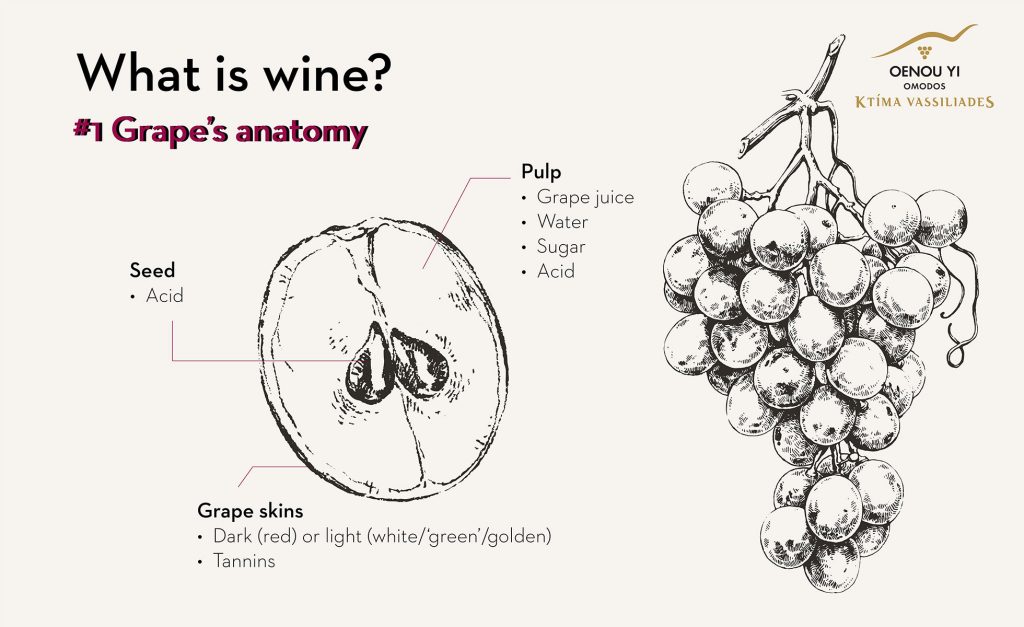What is wine? Where does it come from and what do we need to know in order to comprehend its production and its route from the vineyard to our wine glass?
Wine is of course grape juice; we could not possibly answer these questions if we don’t start by examining the anatomy of the vine, and, more specifically, its grape. Grape juice is produced during crushing (first stage of wine making), then through the alcoholic fermentation process and becomes wine! Before we move on to alcoholic fermentation, though, let’s get to know grape’s anatomy.
Grape skin
Grapes’ skin can be dark (red) or light coloured (white/‘green’) and is responsible for the wine colour that reaches your glass. Whether you drink red or white wine, if this hasn’t been fermented with its skin on, then it most probably gives the wine’s ‘white’ colour. Red and rosé wines get this colour precisely because they are fermented with their skin. In fact, there is a relatively new trend, during which white wines are fermented with their skin and that’s how ‘orange wines’ result. Moreover, the grape skin is also responsible for the tannins; these are substances – an important class of polyphenolic compounds – that give a characteristic bitter taste and a feeling of ‘dryness’ in the mouth.
Pulp
Regardless of the grape skin colour, their pulp always has the same light colour. It is relatively soft and juicy and contains the grape juice (wine before wine) which is mostly made up from water, sugar and acid. According to the variety and the terroir, each grape juice bears different characteristics in aromas, flavour, acidity and tannins (if there are any).
Seed
The grape seed contains ‘oil’, which can destroy the wine flavour and overall quality if crushed with the fruit, as it makes the juice bitter. During vinification we try not to crush the seeds as they contain certain acids that render wine tarty.




